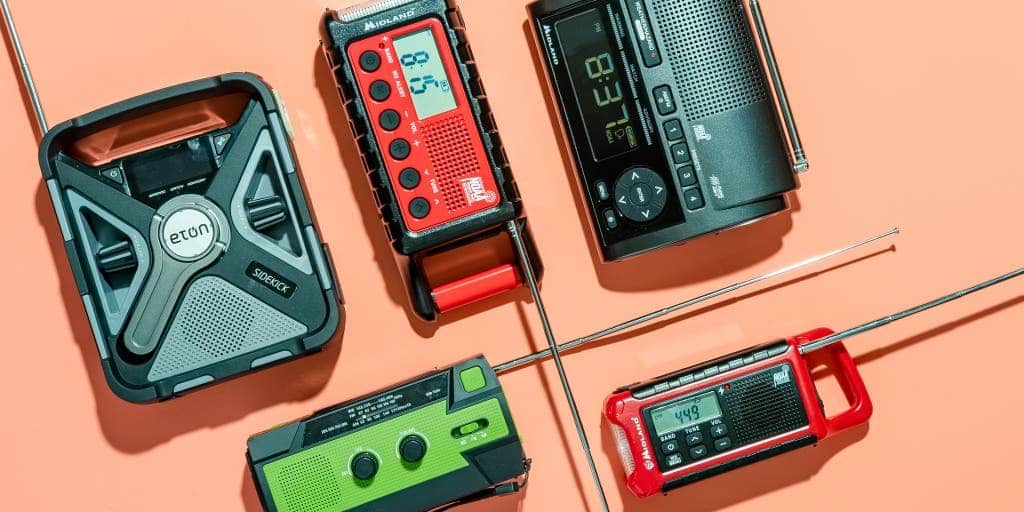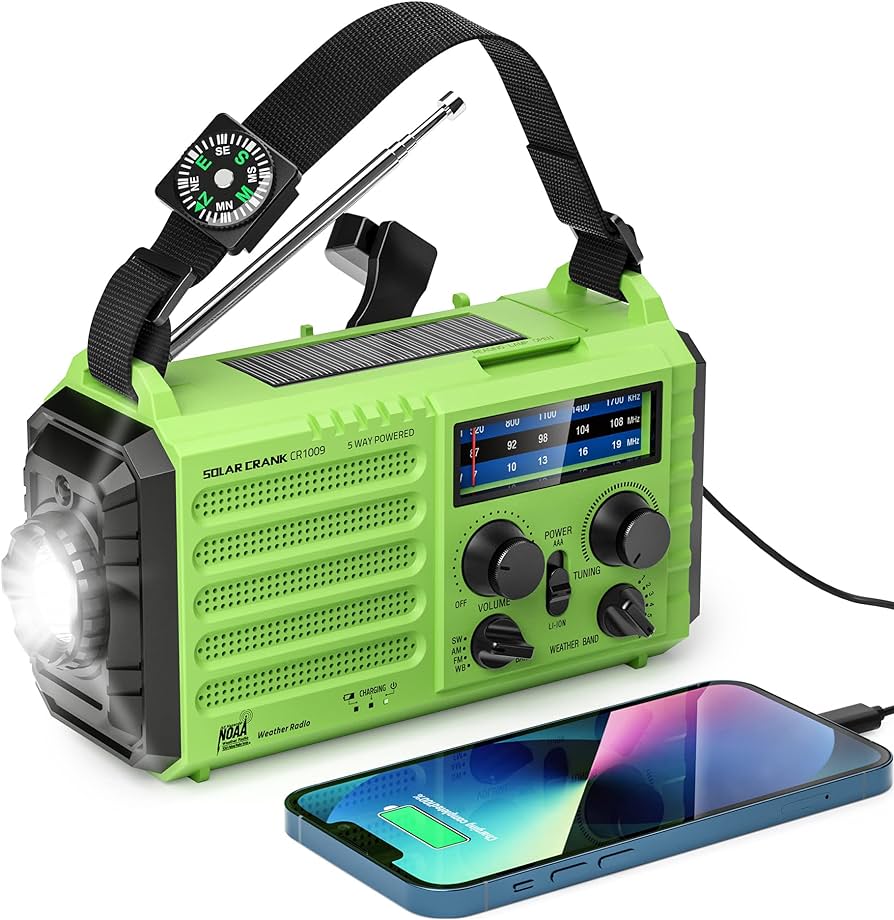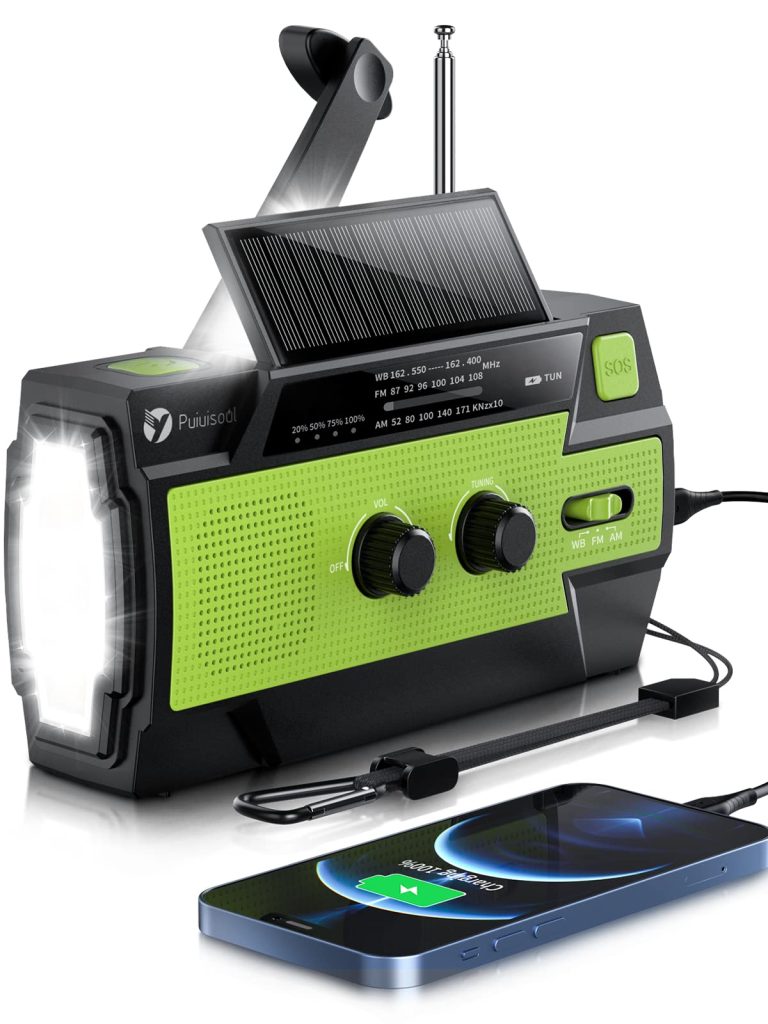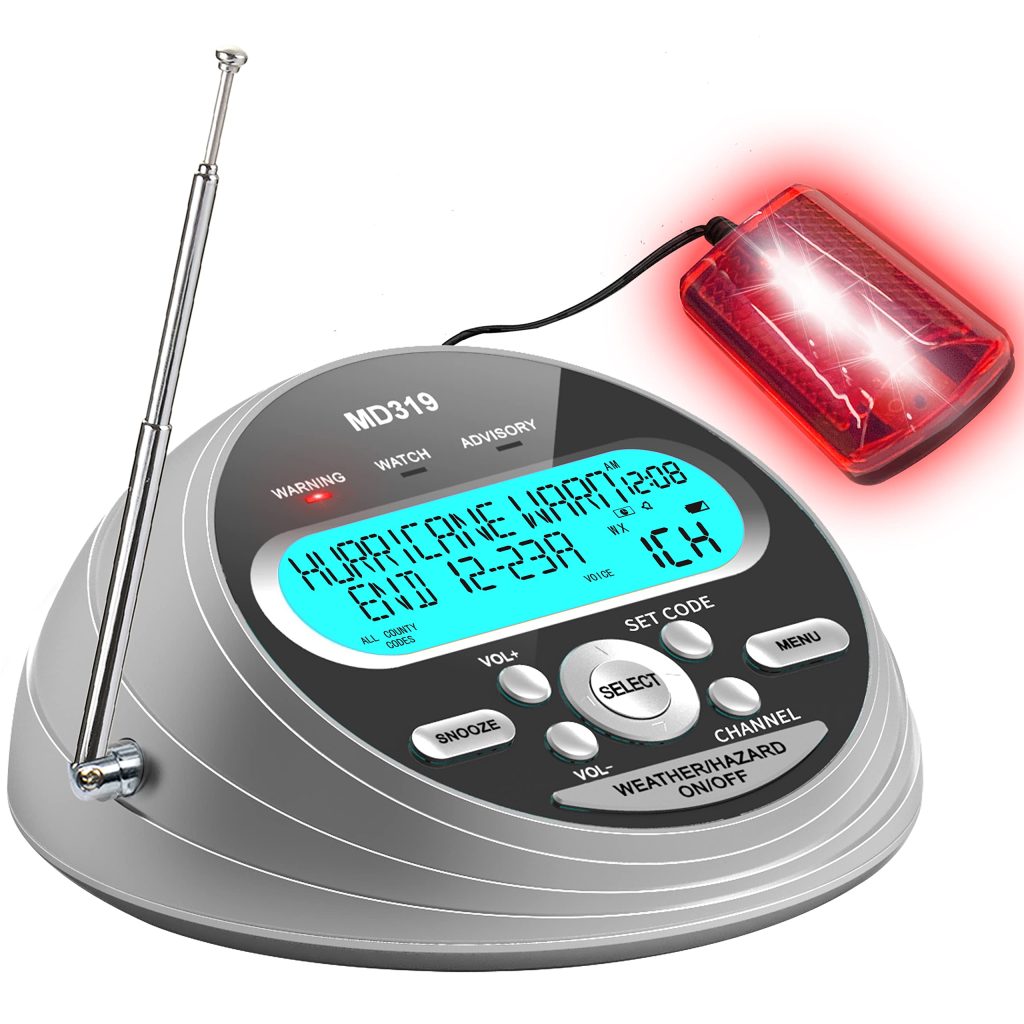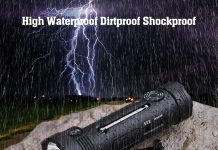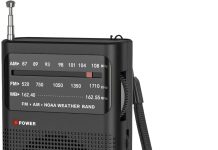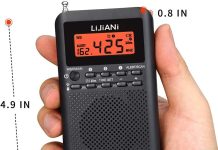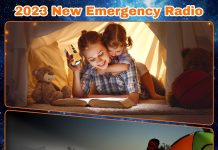Imagine waking up to the sound of your favorite weather radio station, seamlessly integrated with your smart home system. No need to fumble for your phone or switch on the TV to get the latest weather update – your weather radio has got you covered. In this article, we will explore the fascinating world of weather radios and delve into the possibilities of integrating them with your smart home system. Stay tuned to discover how this combination can elevate your home automation experience to a whole new level.
Review contents
What are weather radios and smart home systems?
Definition of weather radios
Weather radios, also known as emergency radios or NOAA radios, are devices that receive and broadcast weather alerts and emergency notifications. These radios are equipped with the National Oceanic and Atmospheric Administration (NOAA) Weather Radio network, which provides real-time weather updates, forecasts, and warnings. Weather radios typically receive signals directly from NOAA’s network towers, ensuring accurate and reliable information.
Definition of smart home systems
Smart home systems are a network of internet-connected devices and appliances that can be controlled and monitored remotely. These systems allow individuals to automate various aspects of their homes, enhance security and convenience, and optimize energy usage. Smart home systems typically consist of devices such as smart thermostats, security cameras, door locks, lighting control, and entertainment systems, which can be controlled using a smartphone or voice commands.
The benefits of integrating weather radios with smart home systems
Enhancing safety and preparedness
Integrating weather radios with smart home systems can significantly enhance safety and preparedness in the event of severe weather conditions or emergencies. By receiving real-time weather alerts directly through their smart home systems, homeowners can stay informed about approaching storms, tornadoes, hurricanes, or other hazardous conditions. This integration allows individuals to take necessary precautions, evacuate if needed, and ensure the safety of their families.
Real-time weather alerts
One of the major benefits of integrating weather radios with smart home systems is the ability to receive real-time weather alerts. Traditional weather radios sound alarms and provide audio notifications, but integrating them with smart home systems takes this a step further. Homeowners can receive alerts not only through the dedicated weather radio but also on their smartphones, tablets, or other connected devices. This ensures that they are always aware of any imminent weather-related threats, even if they are away from home.
Automation and convenience
Integrating weather radios with smart home systems enables automation and convenience in managing emergency situations. For example, homeowners can configure their smart home systems to automatically turn on outdoor lights when there is a severe storm warning, helping them navigate safely around their property. Additionally, smart home systems can be programmed to send alerts to other connected devices, such as smart speakers or compatible wearable devices, ensuring that users receive notifications regardless of their location within their home.
Energy efficiency and cost savings
Integrating weather radios with smart home systems can also contribute to energy efficiency and cost savings. With access to real-time weather information, smart home systems can adjust thermostat settings based on current conditions. For example, if a weather radio alerts the system to a sudden drop in temperature, the smart thermostat can automatically adjust to a more energy-efficient mode, saving on heating costs. Similarly, during extreme heatwaves, the smart thermostat can optimize cooling to reduce energy consumption and lower electricity bills.
This image is property of cdn.thewirecutter.com.
Challenges and considerations in integrating weather radios with smart home systems
Compatibility issues
One of the challenges when integrating weather radios with smart home systems is compatibility. Not all weather radios or smart home systems may be compatible with each other. It is essential to ensure that the chosen weather radio model and smart home system can communicate and integrate seamlessly. Homeowners should check for compatibility specifications and consult the manufacturers or experts, if needed, to avoid potential compatibility issues.
Limited features and functionality
Another consideration when integrating weather radios with smart home systems is the potential limitation of features and functionality. While traditional weather radios provide comprehensive weather alerts and emergency information, the integration with smart home systems may not provide the same level of detail. Homeowners should carefully review the features and capabilities of the integrated system to ensure that essential information is not lost in the process.
Cost implications
Integrating weather radios with smart home systems may come with additional costs. Weather radios, smart home devices, and any additional components required for integration can contribute to the overall expense. It is crucial to consider the budget and weigh the benefits against the costs associated with the integration. Homeowners should conduct thorough research and compare prices to find suitable options that offer a balance between functionality and affordability.
Privacy and security concerns
Integrating weather radios with smart home systems may raise privacy and security concerns. Connected devices, such as smart home hubs or voice assistants, may collect personal information or be vulnerable to hacking. Homeowners should ensure that they choose reputable manufacturers that prioritize encryption and security features. It is advisable to update software regularly and implement proper security measures to protect personal data and maintain privacy.
Current integration options available
Weather radio manufacturers’ built-in integration
Some weather radio manufacturers offer built-in integration options with various smart home systems. These built-in integrations simplify the setup process and ensure compatibility between the weather radio and the smart home system. Homeowners can check with the weather radio manufacturer and refer to the product documentation for details on compatible smart home systems.
Third-party smart home system integration
In addition to built-in integrations, there are also third-party solutions available for integrating weather radios with smart home systems. These solutions often come in the form of software applications or add-ons that bridge the communication between the weather radio and the smart home system. Homeowners can explore these third-party options if their chosen weather radio or smart home system does not have built-in compatibility.
DIY approaches
For tech-savvy individuals, there is the option of taking a do-it-yourself (DIY) approach to integrate weather radios with smart home systems. This involves exploring open-source platforms, programming interfaces, or software development kits (SDKs) provided by weather radio or smart home system manufacturers. With the necessary technical knowledge, homeowners can develop their own custom integration solution tailored to their specific needs.
This image is property of Amazon.com.
How to integrate weather radios with smart home systems
Step 1: Assessing compatibility and requirements
To begin the integration process, homeowners should assess the compatibility between their chosen weather radio and smart home system. They should check if both devices use the same communication protocols or have compatible APIs for interaction. Additionally, they should identify any additional components or software required for the integration and ensure they are readily available.
Step 2: Connecting the weather radio to the smart home system
Once compatibility is confirmed, it is time to physically connect the weather radio to the smart home system. This may involve connecting cables, configuring wireless connectivity, or pairing the devices using designated setup procedures. Homeowners should carefully follow the instructions provided by the weather radio and smart home system manufacturers to establish the connection securely.
Step 3: Configuring and setting up automation
After the initial connection, homeowners should configure the integration settings and set up automation rules. This could include specifying which weather alerts or notifications should trigger certain actions within the smart home system. For example, homeowners may want their smart home system to automatically lock doors and close window blinds when a severe storm warning is issued. Configuration options may vary depending on the capabilities of the smart home system and the weather radio.
Step 4: Testing and troubleshooting the integration
Once the integration and configuration are complete, homeowners should thoroughly test the integration and ensure that it works as intended. They should simulate different weather scenarios and monitor how the smart home system responds to the weather radio alerts. If any issues or inconsistencies arise, troubleshooting steps should be followed, such as checking connections, adjusting settings, or contacting technical support for assistance.
Popular weather radios compatible with smart home systems
Weather Radio Model A
Model A, manufactured by Company X, is a weather radio known for its seamless integration with a wide range of smart home systems. It supports various communication protocols, such as Wi-Fi and Bluetooth, making it compatible with popular smart home hubs and devices. The Model A weather radio provides real-time weather updates and emergency notifications, ensuring homeowners stay informed through their smart home systems.
Weather Radio Model B
Model B, produced by Company Y, is another highly regarded weather radio compatible with smart home systems. It offers advanced features and an intuitive user interface, making it easy to integrate with various smart home systems. With Model B, homeowners can receive timely weather alerts, access detailed forecasts, and customize automation rules to enhance their overall home safety and preparedness.
Weather Radio Model C
Model C, developed by Company Z, is a compact and portable weather radio that seamlessly integrates with smart home systems. Despite its small size, Model C provides outstanding weather forecasting accuracy and reliable emergency notifications. Homeowners can trust Model C to deliver real-time weather updates, ensuring they are always aware of any potential threats, whether they are at home or on the go.
This image is property of Amazon.com.
Top smart home systems that support weather radio integration
Smart Home System X
Smart Home System X is a renowned smart home platform that offers seamless integration with compatible weather radios. It provides a user-friendly interface for homeowners to manage their smart devices and automate various aspects of their homes. With Smart Home System X, users can configure customized alerts, automate responses to weather radio notifications, and ensure their homes are prepared for any severe weather conditions.
Smart Home System Y
Smart Home System Y is another leading smart home platform known for its compatibility with weather radios. Homeowners using Smart Home System Y have access to a diverse range of smart home devices and integration options, including weather radios. The platform offers a robust set of automation features, enabling users to create advanced weather-related routines and optimize their homes’ response to changing weather conditions.
Smart Home System Z
Smart Home System Z stands out as a popular smart home platform that supports weather radio integration. With Smart Home System Z, homeowners can integrate their weather radios seamlessly and take advantage of its wide array of smart home capabilities. The platform offers comprehensive customization options, allowing users to tailor their smart home system’s response to weather alerts and configure personalized automation rules.
Real-life examples of weather radio integration with smart home systems
Case Study 1: Integration success story
In a residential neighborhood prone to severe thunderstorms, a homeowner integrated a weather radio with their smart home system. Whenever the weather radio detected an approaching storm, it sent an alert to the smart home system, triggering a series of automation rules. The smart home system automatically closed all windows, adjusted the window blinds to a closed position, and lowered the temperature on the thermostat to conserve energy. The integration proved highly successful in protecting the home from potential storm damage and optimizing energy usage.
Case Study 2: Overcoming challenges in integration
A homeowner attempted to integrate their weather radio with a smart home system but encountered compatibility issues. The chosen weather radio and smart home system had different communication protocols, causing initial setup complications. However, with the help of a third-party integration solution, the homeowner successfully bridged the gap and established a functional integration. This case study highlights the importance of exploring alternative integration options and seeking outside assistance when facing compatibility challenges.
Case Study 3: Maximizing automation and convenience
In a busy household, a homeowner integrated a weather radio with their smart home system to enhance convenience and preparedness. The integration allowed weather alerts received through the weather radio to trigger a series of actions within the smart home system. The smart home system would adjust lighting throughout the house, send notifications to connected devices, and play audio warnings through smart speakers. This comprehensive integration maximized automation and convenience for the homeowner, ensuring they were always well-informed and prepared for severe weather events.
This image is property of www.travelandleisure.com.
Future developments and trends in weather radio integration
Advancements in technology
Advancements in technology will continue to drive the integration of weather radios with smart home systems. Weather radios may become more compact, energy-efficient, and feature-rich, making integration even more seamless. Similarly, smart home systems will likely undergo improvements, offering enhanced compatibility and additional features specifically designed for weather radio integration.
Increased collaboration between manufacturers
As the demand for weather radio integration with smart home systems grows, manufacturers are expected to increase collaboration and work together to develop standardized integration protocols. This collaboration will enable homeowners to enjoy more options and simplify the integration process, making it easier to connect different weather radios with various smart home systems.
Voice control and AI integration
The integration of weather radios with smart home systems is likely to explore voice control and artificial intelligence (AI) integration. Homeowners may have the ability to ask voice assistants, such as Amazon Alexa or Google Assistant, for weather updates, forecasts, or emergency notifications. AI algorithms may also play a role in analyzing weather data and optimizing smart home responses based on individual preferences and historical weather patterns.
Expansion of features and functionality
In the future, the integration between weather radios and smart home systems is expected to expand, offering new features and functionality. Weather radios may provide more detailed weather data, localized forecasts, and real-time updates from various sources. Smart home systems may further personalize automation rules, allowing homeowners to define specific responses based on their preferences, ranging from adjusting indoor lighting to redirecting automated irrigation systems to water plants during dry spells.
Conclusion
Integrating weather radios with smart home systems offers numerous benefits, including enhanced safety and preparedness, real-time weather alerts, automation and convenience, as well as energy efficiency and cost savings. While challenges such as compatibility, limited functionality, cost implications, and privacy and security concerns exist, current integration options cater to a range of needs. By following the integration steps and considering popular weather radios and smart home systems that support integration, homeowners can create a connected environment that maximizes the potential of these technologies. As future developments and trends continue to shape weather radio integration, homeowners can look forward to advanced features and increased collaboration among manufacturers, ultimately leading to smarter, more efficient, and safer homes.
This image is property of Amazon.com.


